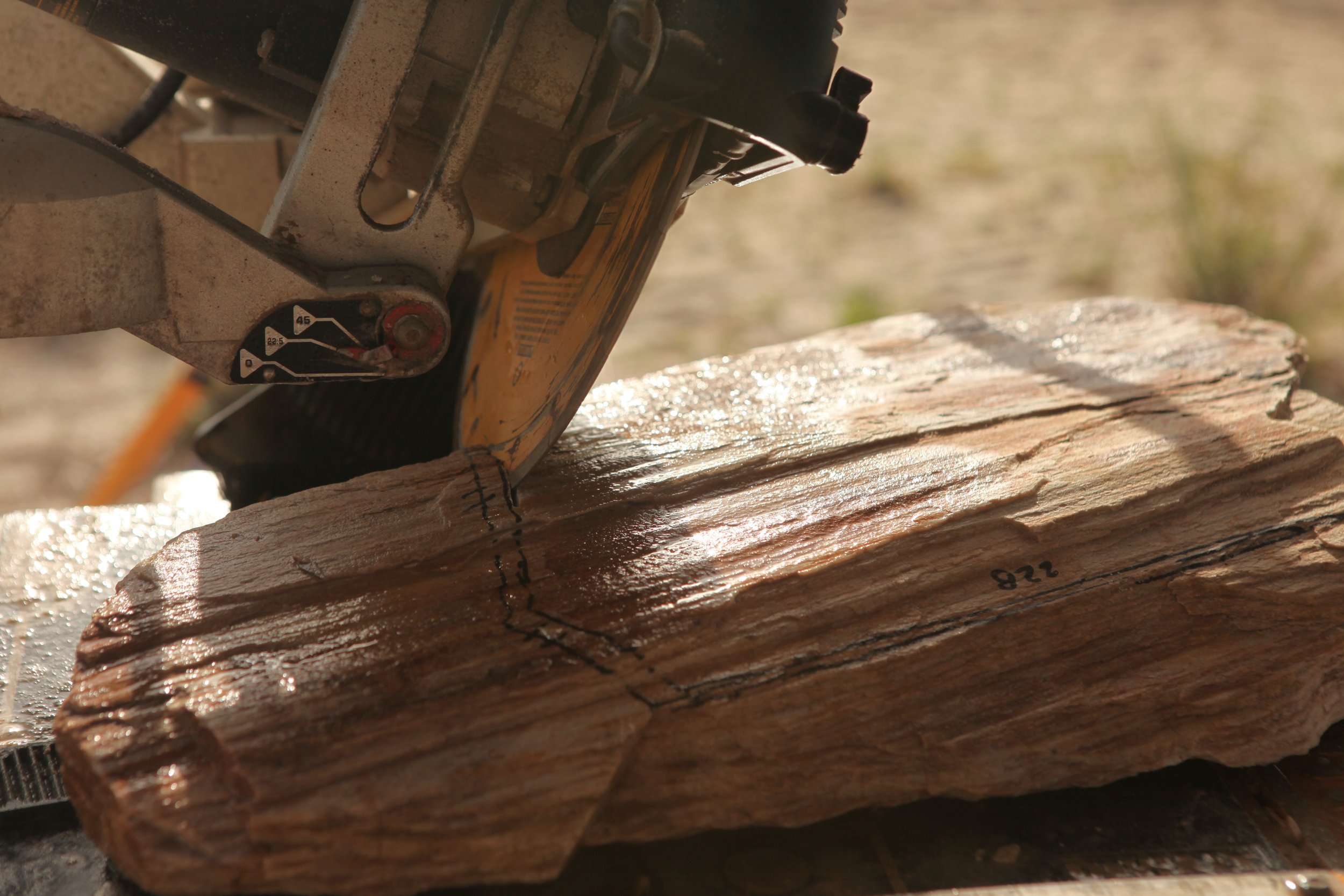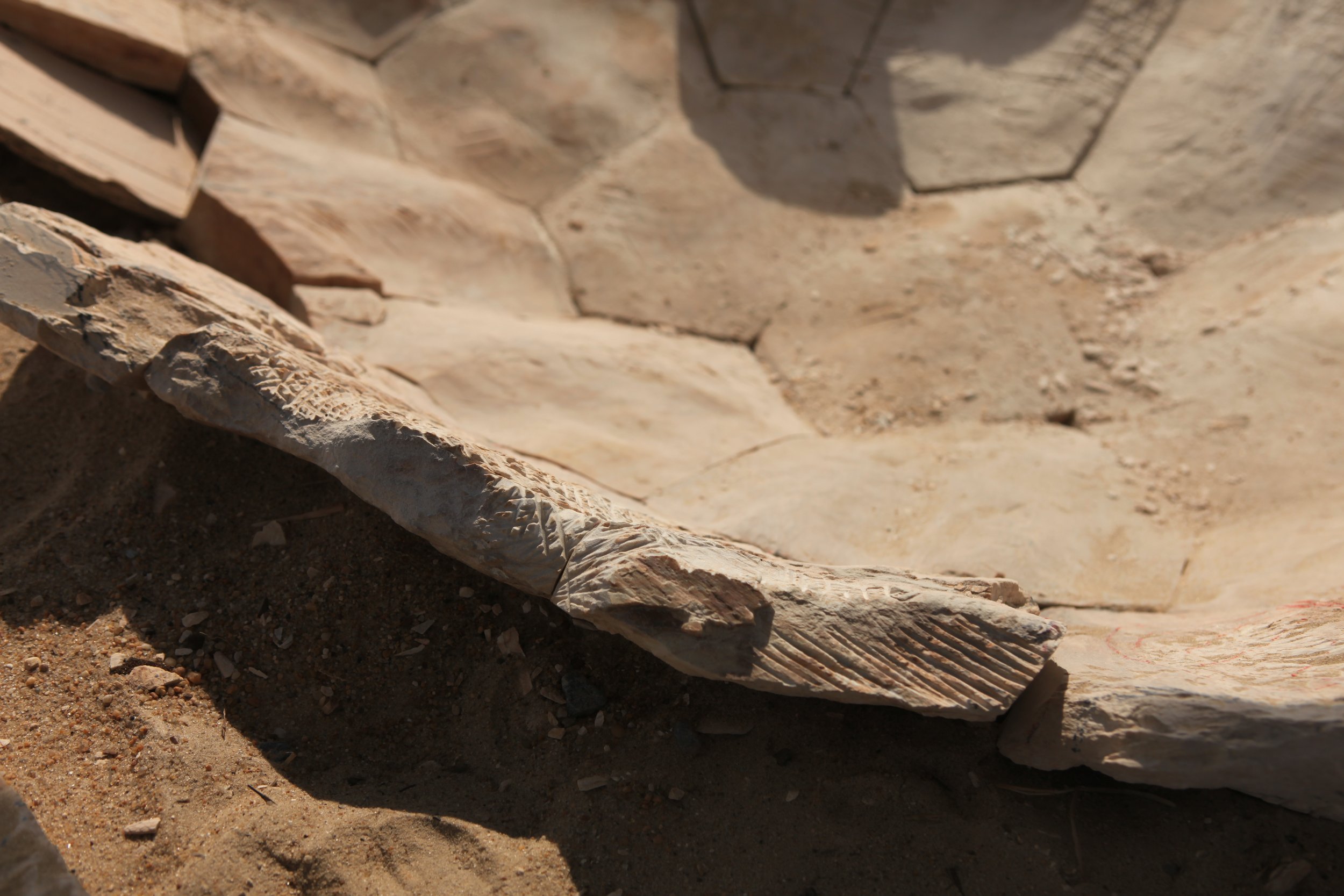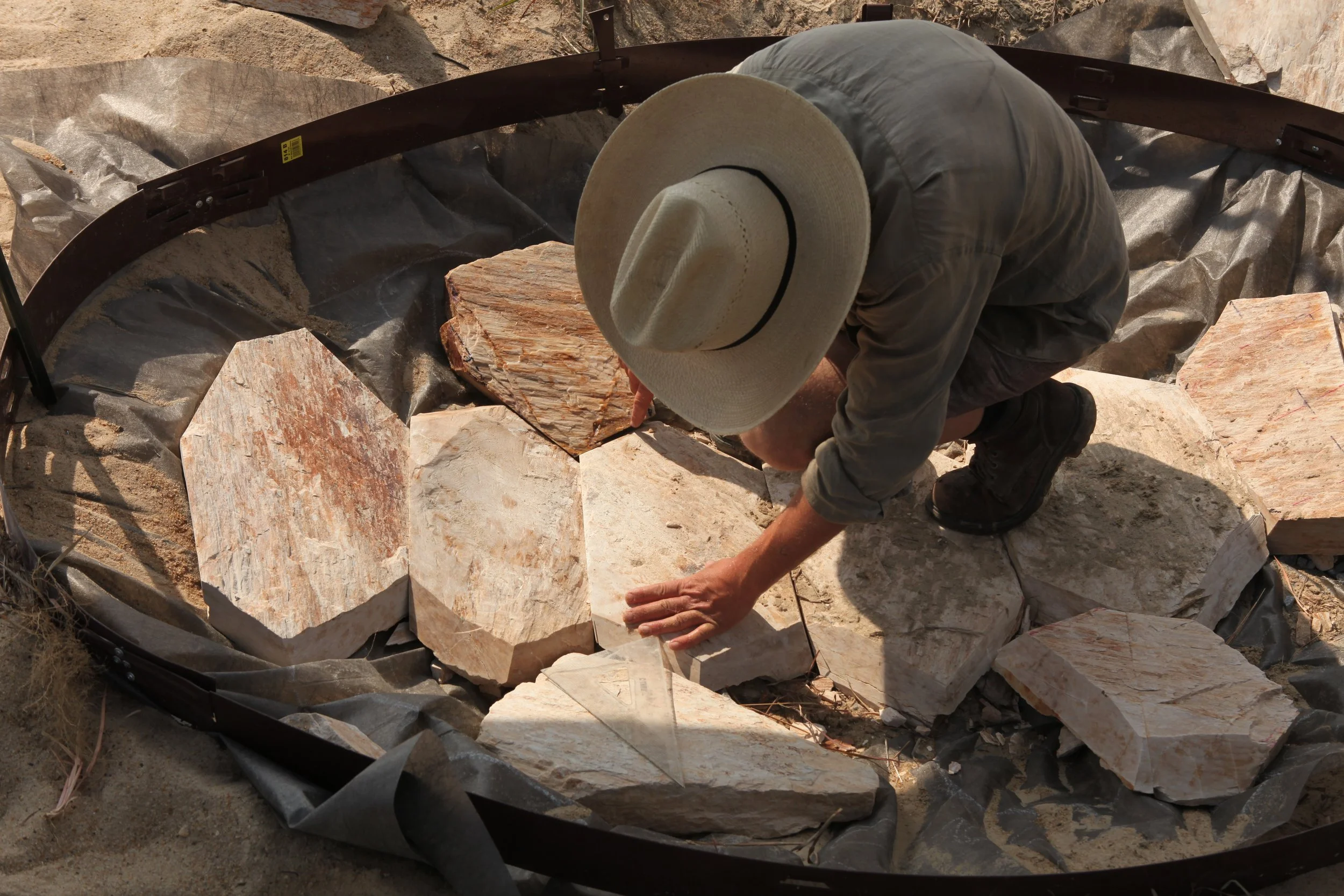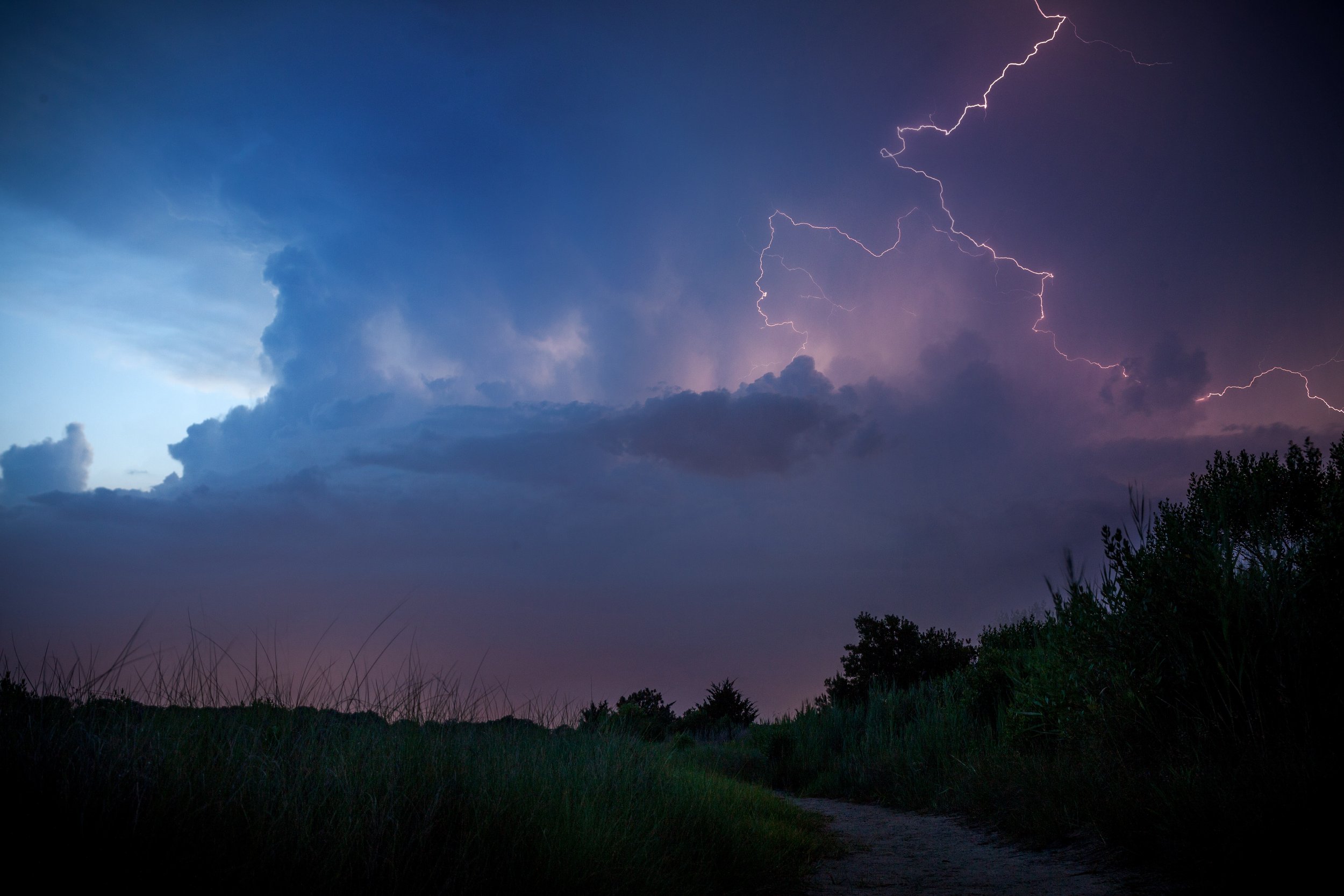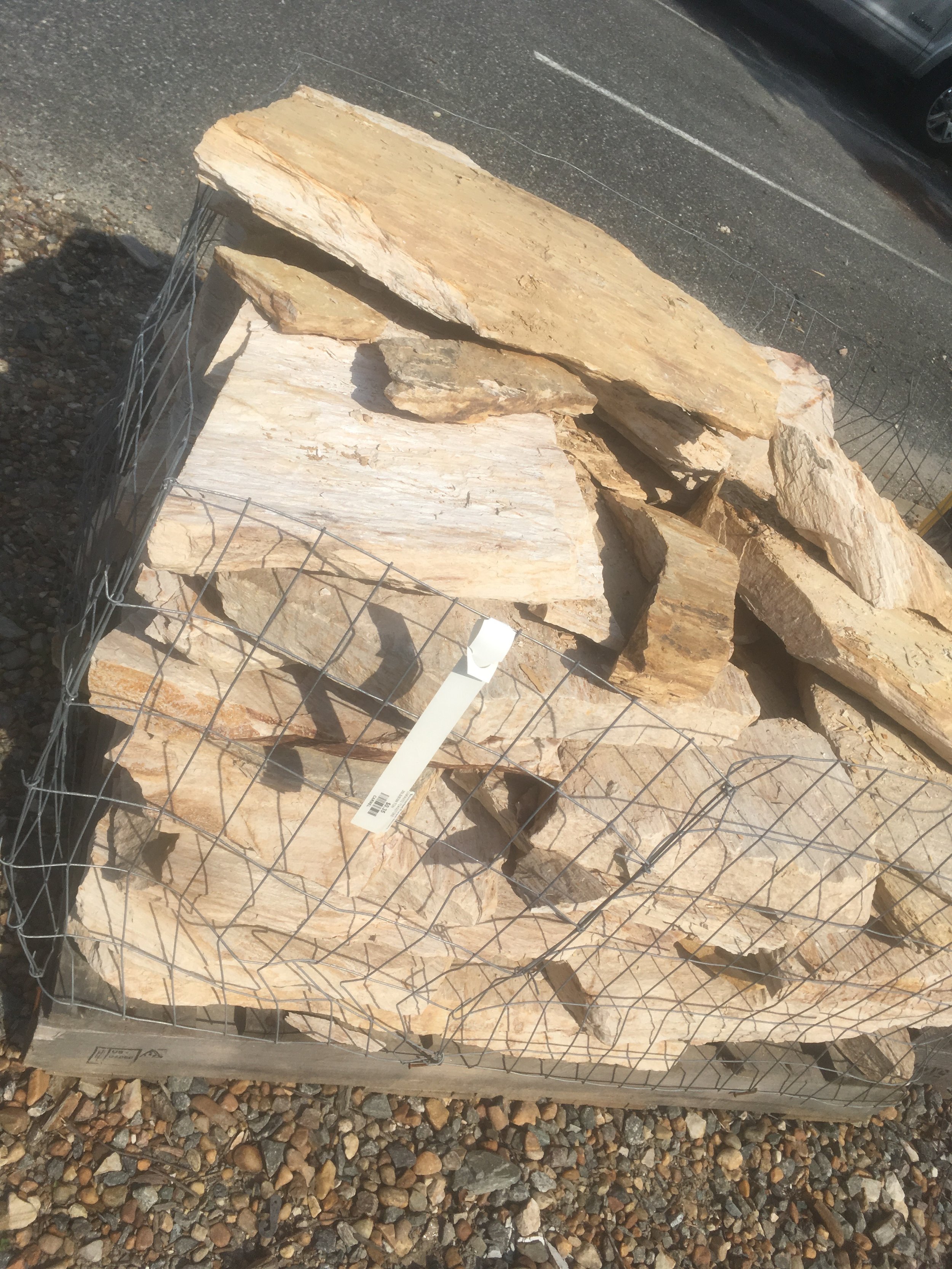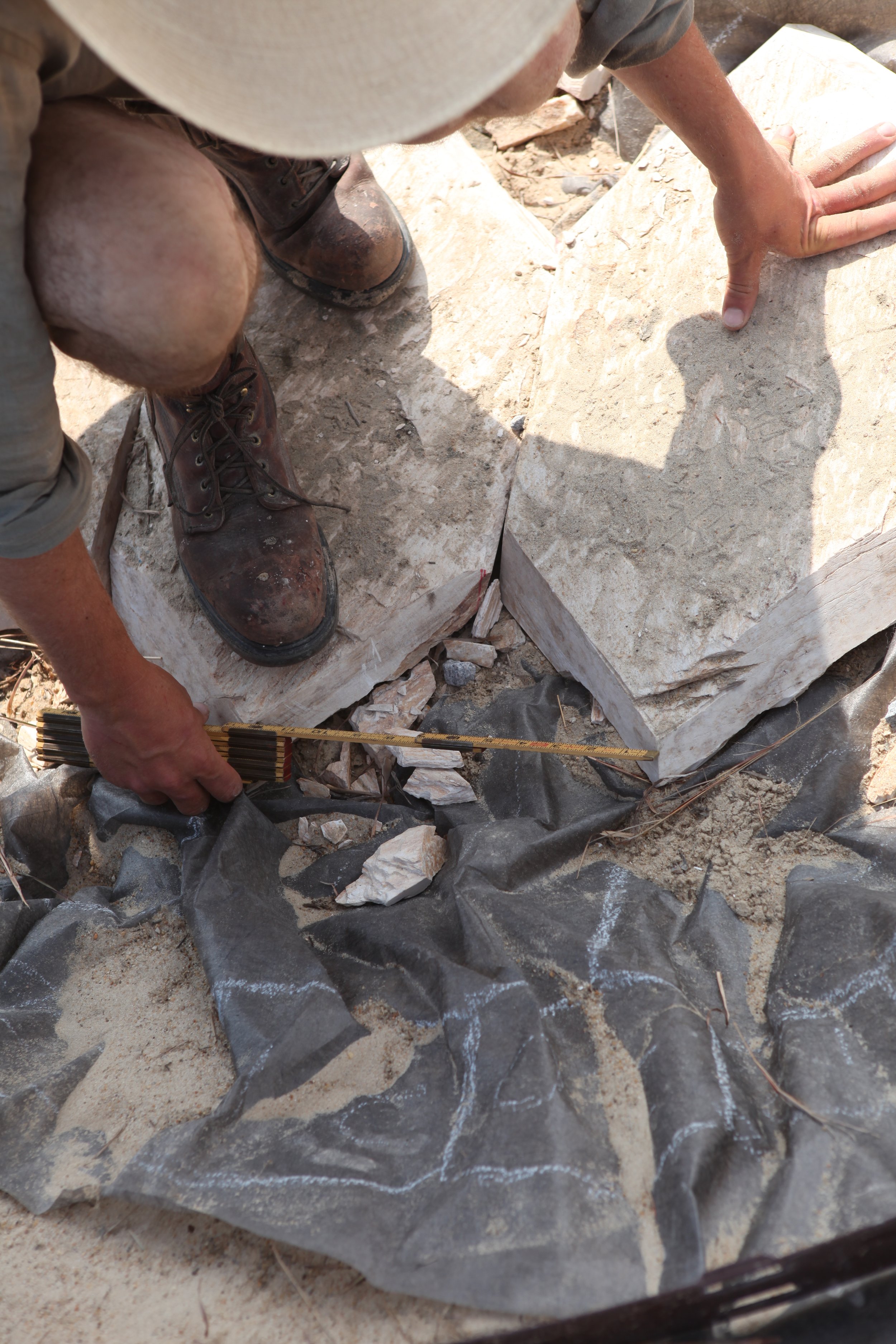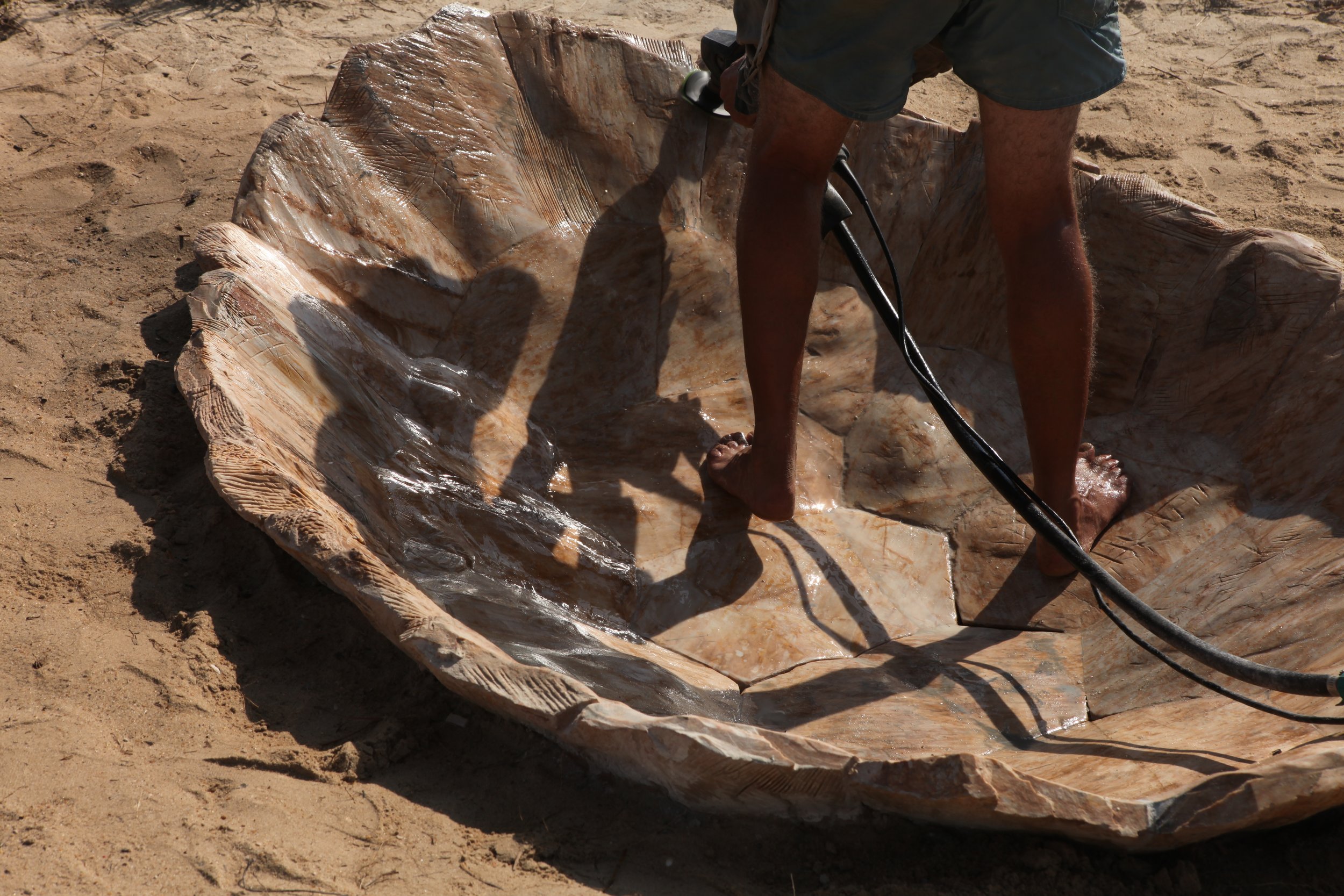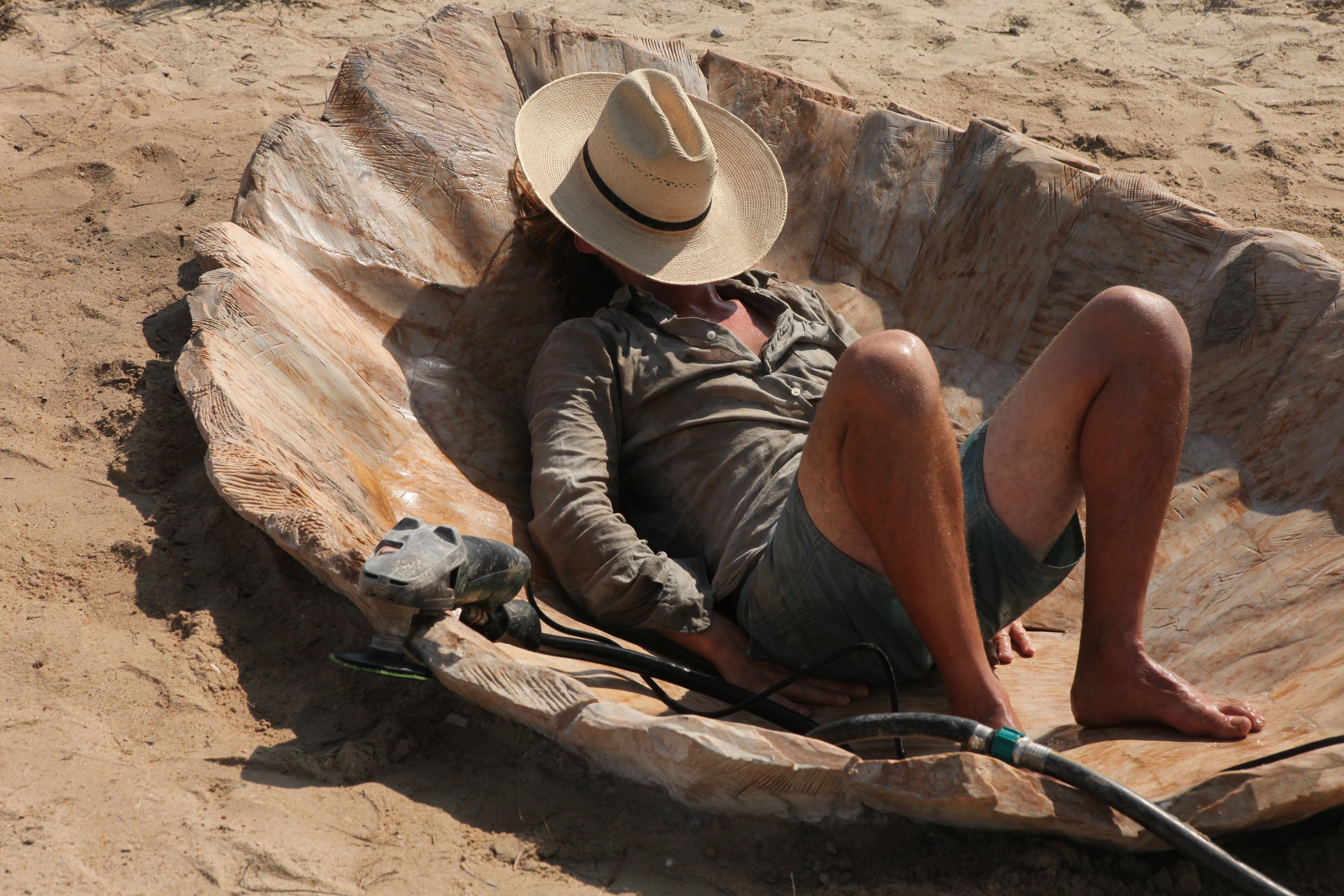TERRAPIN BASIN
TERRAPIN BASIN - 18 x 60 x 86” - ENVIRONMENTAL SCULPTURE: INTERCUT AND CARVED QUARTZITE SANDSTONE - 2018
Terrapin Basin is an immersive environmental public sculpture at the Pleasure House Point environmental area, comprised of 41 interconnected stones assembled together as one to form the human-scaled and basin-like interior carapace of the Diamondback Terrapin. Each stone was individually cut, assembled and carved on site from a Quartzite Sandstone, sourced from the mountains in western Virginia.
The stones are beveled architecturally, and interlocked to distribute the gravity of the stone and any human weight it may bear down into the center keystones. The outermost ring of stones are also notched to lock into a hidden metal frame that acts to retain sand and buttress the structure. The stones are designed to hold together structurally on their own, but with a thin layer of mortar between them, they become a singularly solidified form.
Created for interaction, tactile discovery, and a direct experience with the environment, the polished stones of the arching Atlas shoulders cantilever out over the sand to invite entrance. We are invited to find the ways that our own body and form may find comfortable resting places within the softened curvatures of the stone.
Oriented along the spine of the basin-like interior, ergonomic contours have been carved and smoothed to invite the reclining viewer to inhabit the sculpture. From two points, oriented along with the natural anatomy of the Terrapins shoulder, and in reverse from the tail, resting places that embrace the head and human form, opening a point of view at ground level of the ever shifting sky.
TERRAPIN BASIN: Interior View
The quartzite sandstone is metamorphic, layered in horizontal bands of sediment, and hardened by the heat and pressures of several cycles of transformation back and forth between beach and mountain range. The character of the stone bears these traces of time and formation in the sandy to white quartz tones, punctuated by the rusty iron oxides in vertical fissures and lines that cut across the more dominant and almost wood like grain of the stone.
TERRAPIN BASIN: Interior View
A tactile floating world, it rests in the environment to be discovered as a shell may be found walking a beach, an unexpected encounter with nature and the imagination. Perceptions of it’s form shape-shift in the sands, fluctuating between heaviness and lightness, the large and small, within it’s proportions and proximity.
“Tortoises can tell you more about the road than hares.”
PROCESS | MAKING
As the primary cut pieces of the Terrapin began to take shape, I began the process of cutting lines to cut off the rough skin of the flat stones, curving them inward into the convex interior. It is a form of rough drawing that more quickly removes material in chunks than the more gradual sanding. It was a surprise when people began asking me if I would keep these lines. In much of my previous work I have erased the trace of these marks. Increasingly I have sought to keep more of the character in raw material apparent in my transitions. I found that within the particular nature of this quartzite sandstone, which has more figuring and complex marks of it’s own from formation, that the marks took on a meaning as people observed the process and in some cases became attached to them, because of the personal connection they developed through the tactile experience of touching them, and the narratives they imagined relating to what a Terrapin must go through in the course of it’s life. Also the lines form a kind of unknown hieroglyphics, for some, that strongly resonate with the site. As I began to cut the outer ring of stones, I found in turn that the cut lines of my drawing did reveal a way for me to more smoothly resolve together the sawn cut edges with the natural broken edges, and the rough outside to smooth inside, unifying the overall landscape of textures and the way that light also plays across the sculpture.
PROCESS | A Social and Dynamic Natural Environment
During the 2 month long process of working on site at Pleasure House Point, beyond the scheduled artist talks, I had daily interaction with a great number of curious visitors. There are many people who very regularly walk the area daily or weekly, and over the period of time I developed connection with many, and they with the project. These relationships added a richness to the considerable time I spent there, and would not have been the same or possible without them. The area is an ever shifting landscape, which I observed changing through the season, through storms, heat, the flowering and fading of different forms of plant life, as well as the periodic visits from the Diamondback Terrapin as it found a place to lay it’s eggs in the sand. Due to shifting weather conditions, these social interactions and the challenging nature of the stone and setting up and outdoor studio, the project expanded in time considerably from it’s originally projected timeline. In the end, almost humorously, the installation occupied the same time cycle of 2 months, as it takes for a Terrapin egg to be laid, gestate, and hatch.
